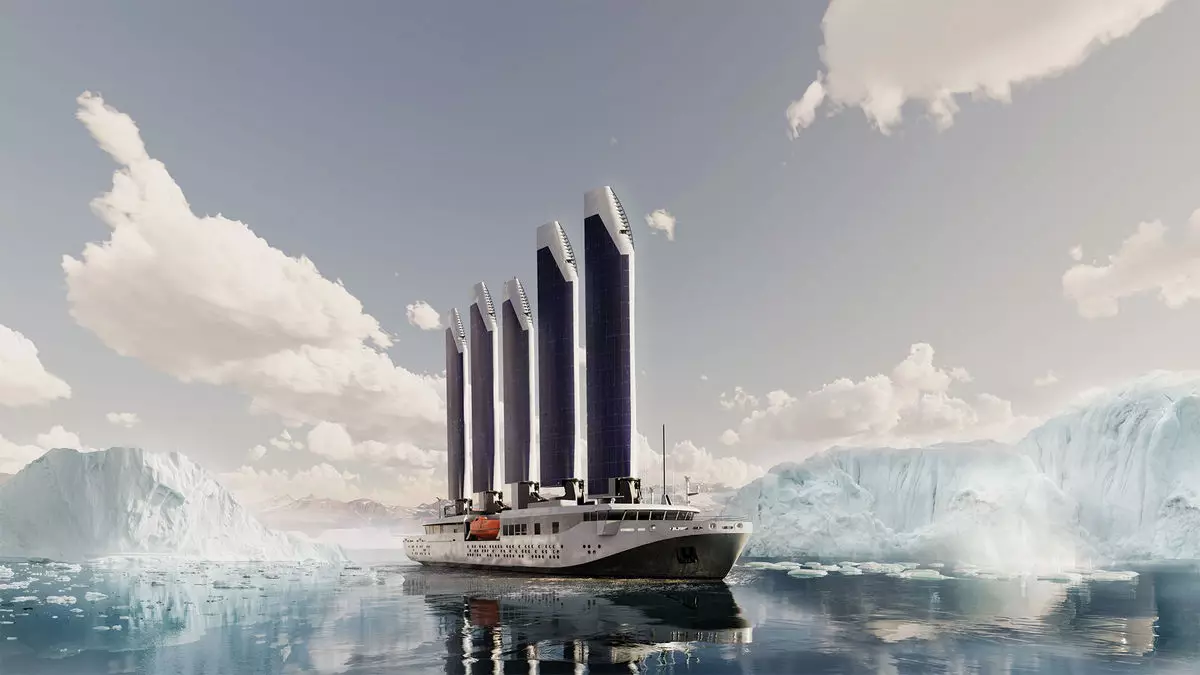In today’s modern market, balancing sustainability efforts with consumer expectations has become a tightrope walk for expedition cruise lines. While these companies have undeniably established themselves as leaders in promoting sustainable practices within the notoriously resource-intensive cruise industry, they face a glaring reality: passengers are often not willing to bear the costs associated with eco-friendly initiatives. Executives from reputable expedition firms, like Ashton Palmer of Expedition Trips, have articulated this finely poised dilemma. Palmer emphasizes that although sustainability is a laudable goal, there’s a finite limit to how much customers are willing to pay. The market overwhelmingly reflects a cautious stance, as many passengers express a desire for greener travel but remain hesitant when faced with tangible cost increases.
When it comes down to distilling the consumer’s perspective on sustainability, it becomes evident that ideals don’t always align with actions. Ponant’s CEO Samuel Chamberlain and Hurtigruten’s COO Gerry Larsson-Fedde both highlight this conflict during panel discussions at various industry conferences. They suggest that even affluent passengers tend to prioritize immediate value over long-term ethical considerations, often opting for lower prices rather than sustainability premiums. This paradox presents a troubling hurdle; the demand for greener travel remains vocal, yet the financial commitment is lacking.
Competition and Market Saturation
The saturation of the expedition cruise market has compounded the issue. Following an expansive boom in fleet growth during the 2010s, many lines now find themselves in a highly competitive landscape. The pandemic has further exacerbated this issue, leaving a supply-demand imbalance that pressures operators to keep prices competitive. Claire Maguire, an expedition specialist at Cruise Planners, notes her customers’ increased focus on cost value over sustainability; an experience tailored to their budget is typically prioritized over environmental stewardship. This movement underscores a critical reality for cruise lines: market viability hinges significantly on being able to offer attractive pricing, an element that often pushes sustainability to the back burner.
Despite the pressing financial realities, many expedition lines are not stepping away from their sustainability commitments. Companies like Hurtigruten have made considerable investments into hybrid-powered vessels, viewing these upgrades not as a cost but rather as a strategic move toward securing future business viability. As Larsson-Fedde succinctly puts it, maintaining eco-friendly operations in sensitive regions, such as Norway’s coastal landscapes, is imperative for sustaining their brand for another century.
The Economics of Eco-Innovation
There’s another layer to this story: the long-term financial advantages that can arise from eco-innovations. As companies invest in cutting-edge green technologies—like Hurtigruten’s advances in reducing emissions—they also inherently lower fuel costs and enhance their operational efficiency. The correlation between sustainability measures and financial savings significantly invalidates the myth that eco-driven investments are simply an altruistic venture. In fact, when one considers an investment of, say, $100 million leading to a 25% reduction in fuel consumption, the project’s return becomes far more appealing when placed against increasing fuel costs in today’s economy.
In a world where consumers are increasingly conscious of their carbon footprint, cruise lines need to adapt quickly. The development of heavily sustainable ships like Ponant’s hybrid vessel or Hurtigruten’s zero-emission designs could shift perceptions among travelers. For potential expedition cruisers, the draw often initiates with the destination but is becoming intertwined with a line’s sustainability credentials. Travelers eager to explore fragile ecosystems like Antarctica seek assurances that their journeys will minimize environmental repercussions, engendering a newfound desire for responsible off-the-beaten-path adventures.
Emerging Trends in Sustainable Cruising
The emergence of new players like the French expedition line Selar signals a shifting tide in the industry. Selar’s commitment to providing a polar expedition ship primarily powered by wind and solar energy exemplifies how sustainability can intertwine with unique traveling experiences. Co-founder Sophie Galvagnon argues that the focus on mitigating environmental impact should not come at an additional cost to customers; rather, it should be an integral part of the service offering. In creating customized, slower-paced itineraries that are responsive to weather conditions—free from rigid schedules—Selar indicates a disruptive approach that prioritizes interaction with nature over speed and efficiency.
Yet, as the industry evolves, differing consumer attitudes toward sustainability remain a critical factor. Like other lines, Selar admits guests are often more inclined to pay for unique experiences rather than simply for sustainability credentials. This highlights the ongoing challenge within expedition cruising: how to sell eco-friendliness as not just an ethical choice but also a premium experience worth investing in.
In essence, expedition cruise lines teetering on the edge of this dual-world dynamic find themselves pacing towards a future that necessitates adaptability, resilience, and—auld rich balance between fulfilling the consumer’s desire for authentic, transformative travel experiences while committing to the sustainability ethos that the modern traveler increasingly demands.


Leave a Reply